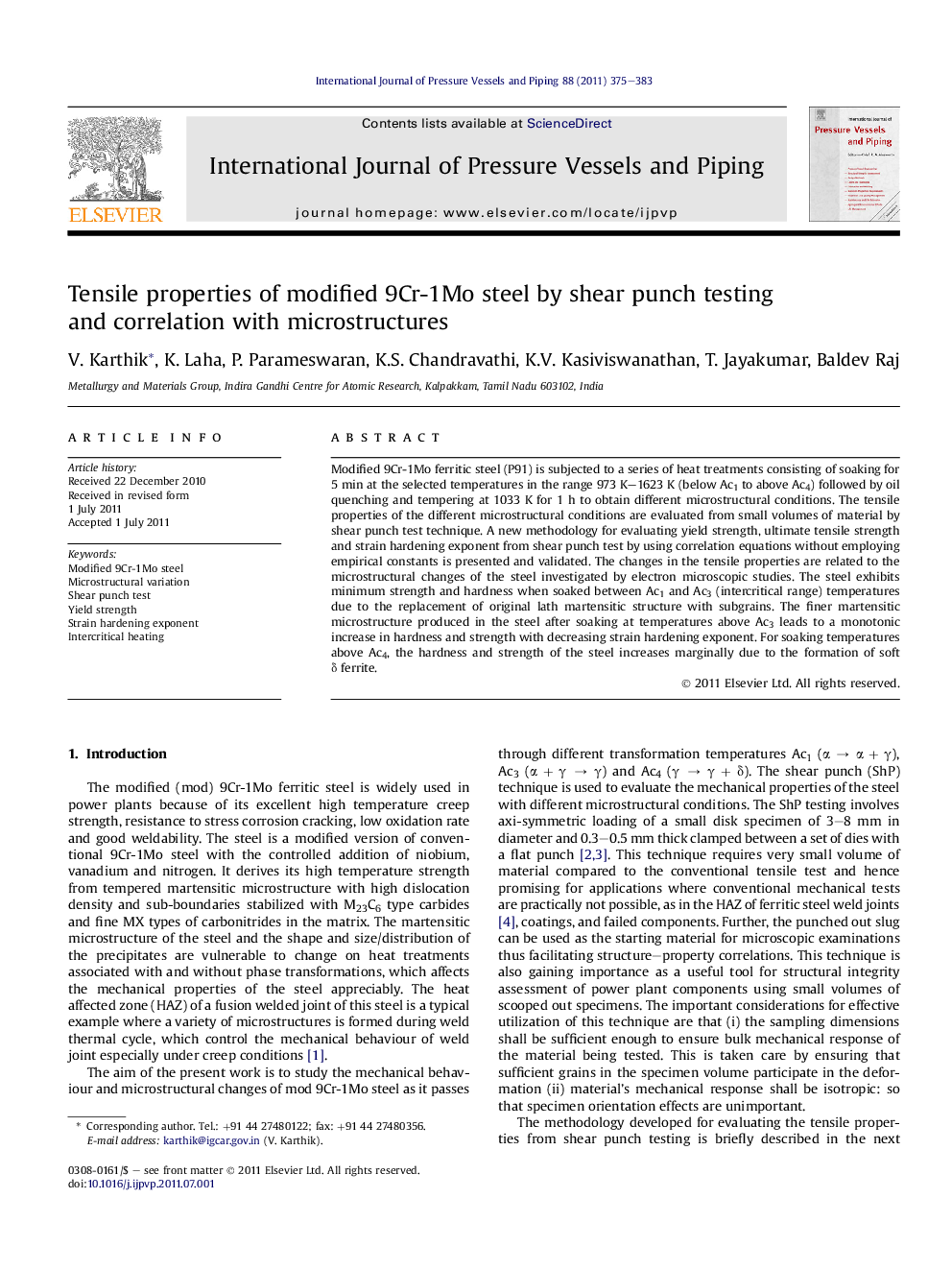| Article ID | Journal | Published Year | Pages | File Type |
|---|---|---|---|---|
| 787437 | International Journal of Pressure Vessels and Piping | 2011 | 9 Pages |
Modified 9Cr-1Mo ferritic steel (P91) is subjected to a series of heat treatments consisting of soaking for 5 min at the selected temperatures in the range 973 K–1623 K (below Ac1 to above Ac4) followed by oil quenching and tempering at 1033 K for 1 h to obtain different microstructural conditions. The tensile properties of the different microstructural conditions are evaluated from small volumes of material by shear punch test technique. A new methodology for evaluating yield strength, ultimate tensile strength and strain hardening exponent from shear punch test by using correlation equations without employing empirical constants is presented and validated. The changes in the tensile properties are related to the microstructural changes of the steel investigated by electron microscopic studies. The steel exhibits minimum strength and hardness when soaked between Ac1 and Ac3 (intercritical range) temperatures due to the replacement of original lath martensitic structure with subgrains. The finer martensitic microstructure produced in the steel after soaking at temperatures above Ac3 leads to a monotonic increase in hardness and strength with decreasing strain hardening exponent. For soaking temperatures above Ac4, the hardness and strength of the steel increases marginally due to the formation of soft δ ferrite.
► A methodology presented for computing tensile properties from shear punch test. ► UTS and strain hardening estimated using extended analysis of blanking models. ► The analysis methodology validated for different heat treated 9Cr-1Mo steel. ► Changes in tensile properties of steel correlated with microstructures.
